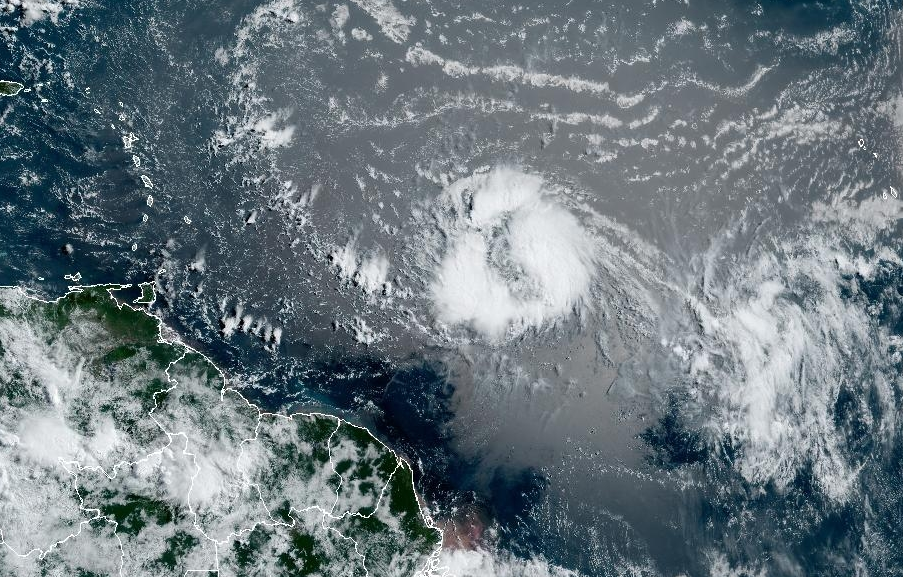
Satellite photo by National Hurricane Center

Audio By Carbonatix
Tropical Storm Bret, the second named storm of the 2023 hurricane season, has been gaining strength in the Atlantic basin and is forecast to move across the Lesser Antilles this week, potentially passing near Puerto Rico as early as this weekend.
Bret is expected to intensify to near-hurricane strength as it moves westward over abnormally warm ocean waters over the next 48 hours. But the storm’s path and intensity are uncertain in the days that follow, with some models predicting that it will lose some strength before it approaches Puerto Rico and the Dominican Republic.
According to the National Hurricane Center’s 5 a.m. advisory, wind shear in the Caribbean and “drier mid-level air” might help weaken the system before the weekend.
“Given the larger than usual uncertainty in the track forecast, it is too early to specify the location and magnitude of where… hazards could occur. However, everyone in the Lesser Antilles, Puerto Rico, and the Virgin Islands should closely monitor updates to the forecast for Bret and have their hurricane plan in place,” the advisory stated.
At the end of the week, the storm – currently packing winds of 40 mph – will still likely be more than 1,000 miles away from Miami. It remains unclear what, if any, impact the system will have on South Florida.
If Bret strengthens into a hurricane, it would mark an early start to the season, as the first hurricane of the year on average doesn’t form until mid-summer.
National Hurricane Center forecasters are predicting a 40 percent chance of a “near normal” season, a 30 percent chance of an “above normal” season, and a 30 percent chance of a “below normal” season.
Between 12 and 17 named storms are expected in 2023.
This hurricane season, the weather pattern known as El Niño is forecast to generate wind shear in the Atlantic basin that could hinder tropical storms’ strengthening. But warmer-than-normal ocean temperatures could favor hurricane formation, negating the effects of El Niño, climatologist Brian McNoldy told New Times early this month.
“I think my bet would be on the warmer ocean playing a larger role so maybe a slightly above-average season,” McNoldy said. “My only reason for that is that when storms are faced with a warm ocean, especially warmer than the average would be, it’s really a kick for them right there and then, whereas El Niño’s effect on activity is kind of an indirect one.”
The first named system of the season was Tropical Storm Arlene, which formed off the southwest coast of Florida in early June but fizzled out as it moved southward in the Gulf of Mexico.